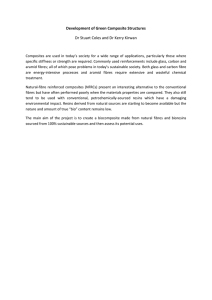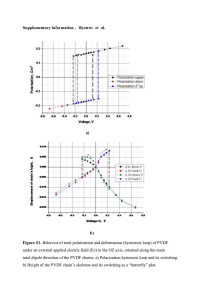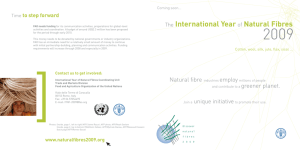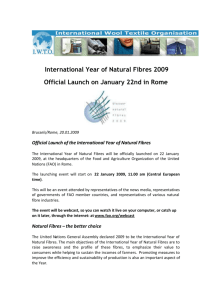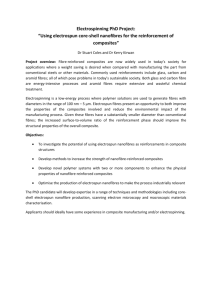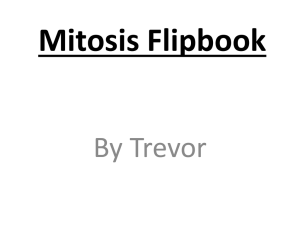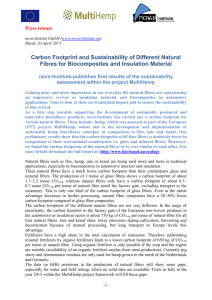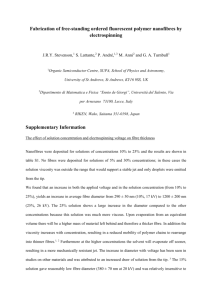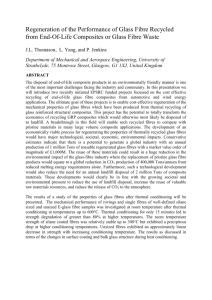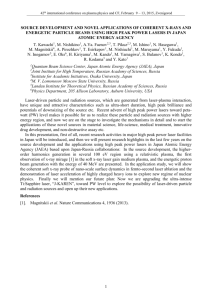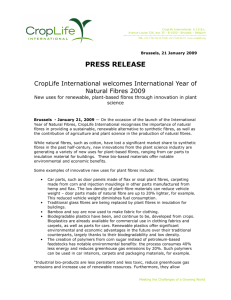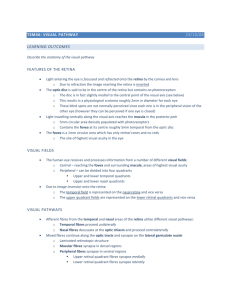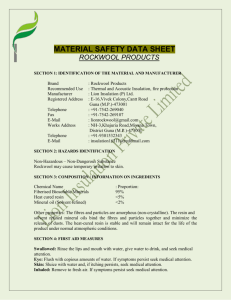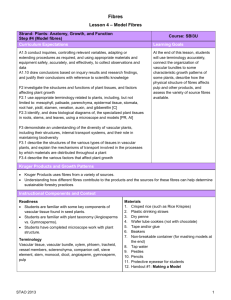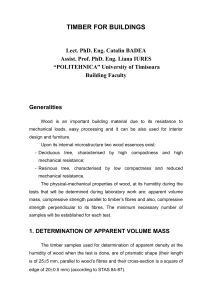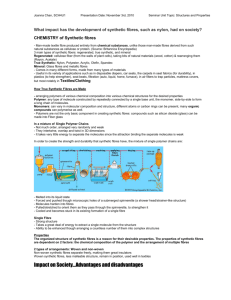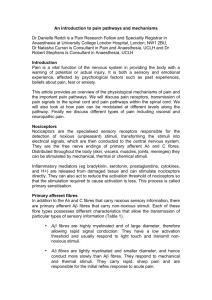APP_39001_sm_SuppInfo
advertisement
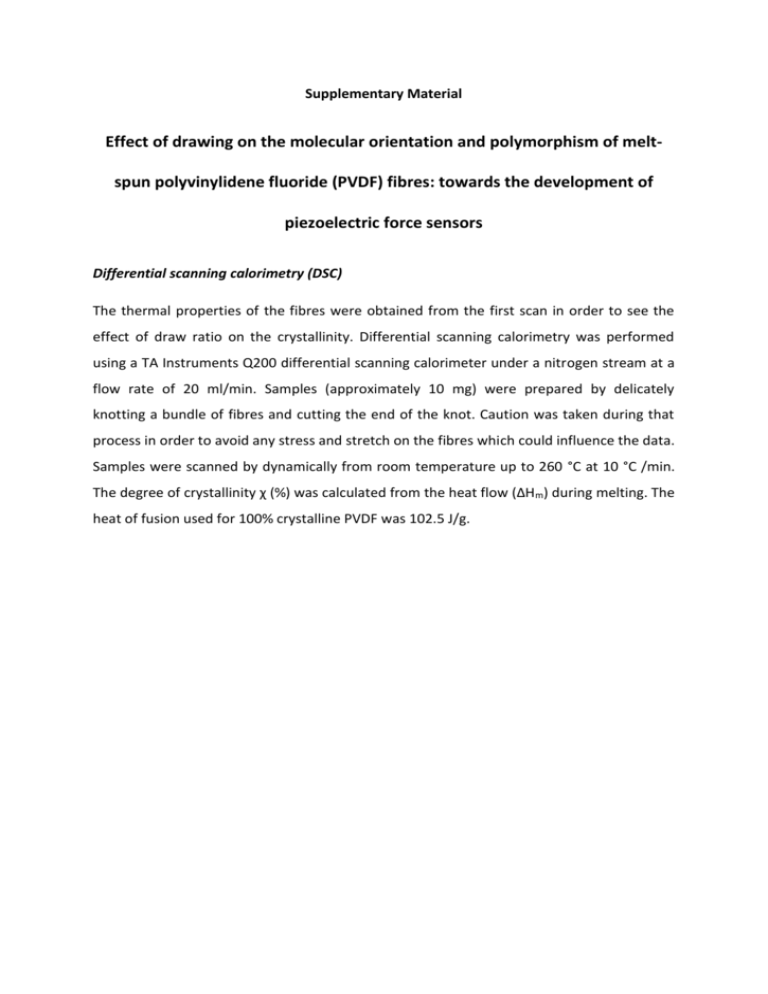
Supplementary Material Effect of drawing on the molecular orientation and polymorphism of meltspun polyvinylidene fluoride (PVDF) fibres: towards the development of piezoelectric force sensors Differential scanning calorimetry (DSC) The thermal properties of the fibres were obtained from the first scan in order to see the effect of draw ratio on the crystallinity. Differential scanning calorimetry was performed using a TA Instruments Q200 differential scanning calorimeter under a nitrogen stream at a flow rate of 20 ml/min. Samples (approximately 10 mg) were prepared by delicately knotting a bundle of fibres and cutting the end of the knot. Caution was taken during that process in order to avoid any stress and stretch on the fibres which could influence the data. Samples were scanned by dynamically from room temperature up to 260 °C at 10 °C /min. The degree of crystallinity χ (%) was calculated from the heat flow (ΔHm) during melting. The heat of fusion used for 100% crystalline PVDF was 102.5 J/g. Figure S1. Example of DSC melting endotherms of the PVDF fibres produced at a flow rate of 80 cc per minute and stretched at various draw ratios. Figure S2. Evolution of the crystallinity upon drawing. X-Ray diffraction. The x-ray data was deconvoluted using Peak Fit v4.12. The x-ray pattern was deconvoluted between 15° and 40° of 2θ. The 2θ location for the α and β phases were identified by peak intensities at 17.7°, 18.4°, 19.9° and 26.6° of 2θ for the α-crystal phase and 20.3° and 35° for the β phase. The location of the amorphous peak was generally 19.5° but was allowed to vary by ± 0.2°. The peaks were assumed to be Gaussian-Lorentzian with a linear baseline. The height and the breadth of each peak were manually adjusted to provide a reasonable starting point for the curve fitting program (R2>0.98). Figure S3. Example of peak deconvolution between 15° and 40° of 2θ of the PVDF fibres produced at a flow rate of 80 cc per minute and drawn at 75% of their original length. The β phase percent was found to be 57% in this case, correlating well with the FT-IR data.
